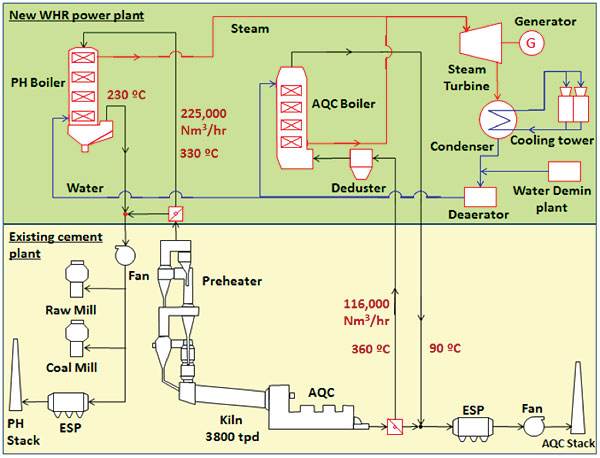Give high energy costs the BOOT
E.ON Masdar Integrated Carbon (EMIC), which offers unique end-to-end project development, implementation, investment, financing, and operational solutions, offers an alternative business model for waste heat recovery in the cement sector. By E.ON Masdar Integrated Carbon Ltd, UAE.

Figure 1: flow diagram of a 3800tpd WHR plant for a cement works
The days of cheap energy are going or, in many cases, have already gone. Increasingly, International Monetary Fund (IMF) development loans are accompanied with strong recommendations for energy subsidy reforms and this, along with recognition of the burden that such subsidies have on government budgets, have resulted in dramatic energy price increases, even in countries with traditionally cheap energy. An example of this is Egypt, which in February, seemingly overnight, announced subsidy reductions resulting in a 50 per cent increase in fuel costs for the cement sector. The government, struggling with chronic energy shortages, followed these price hikes with an announcement in April that natural gas supply to the cement sector would be reduced by 50 per cent beginning as early as June and leaving cement producers with no option but to source alternative fuel. In Egypt’s case, supply shortcomings are not new and Suez Cement, Egypt’s largest cement producer, has stated recently that the supply deficit has caused a 30 per cent production loss already in 20131.

